

Discover more from The Jewish Table
15 Minute Gazpacho with Crunchy Sumac Croutons
Plus: The Four Questions Interview with Leetal Arazi of NY Shuk
Wow! Wow, wow. Earlier this week, I received an email letting me know that The Jewish Table was included as a featured newsletter on the Substack app and homepage, and let’s just say there are a LOT of new faces around here. I am honored and truly delighted to have you all - welcome!
I have plenty of summery deliciousness to share with you this week, including a 15 Minute Gazpacho with Crunchy Sumac Croutons, and an interview with the inimitable Leetal Arazi of NY Shuk. But before that, I thought I’d take a few sentences to introduce myself and this newsletter to new readers. (Long time readers, feel free to skip ahead!)
My name is Leah Koenig, and I am a food writer focused on all things related to global Jewish cuisine. I’ve written 6 cookbooks, including Modern Jewish Cooking and, most recently, The Jewish Cookbook. And I am currently working on my seventh book (out in Fall, 2023!), which will be focused on Rome’s historic Jewish community and cuisine. I live in Brooklyn with my husband, Yoshie, and our two kids, Max and Bea.
This newsletter, The Jewish Table, is a clearing house for Jewish recipes, history, and stories that don’t fit neatly into my articles or books. It is also a place where I get personal (particularly about parenting two young kids, and sometimes about politics), and a place for folks who love, or are curious about, Jewish food to connect with one another.
Paid subscribers receive a newsletter every week, plus have access to the full recipe archive, a weekly chat thread, and special offers. Unpaid subscribers receive a newsletter about once/month. I love all my subscribers! But if you are interested in and able to upgrade to a paid subscription, you are directly contributing to keeping this newsletter going. (Thank you!)
Okay, on to the good stuff:
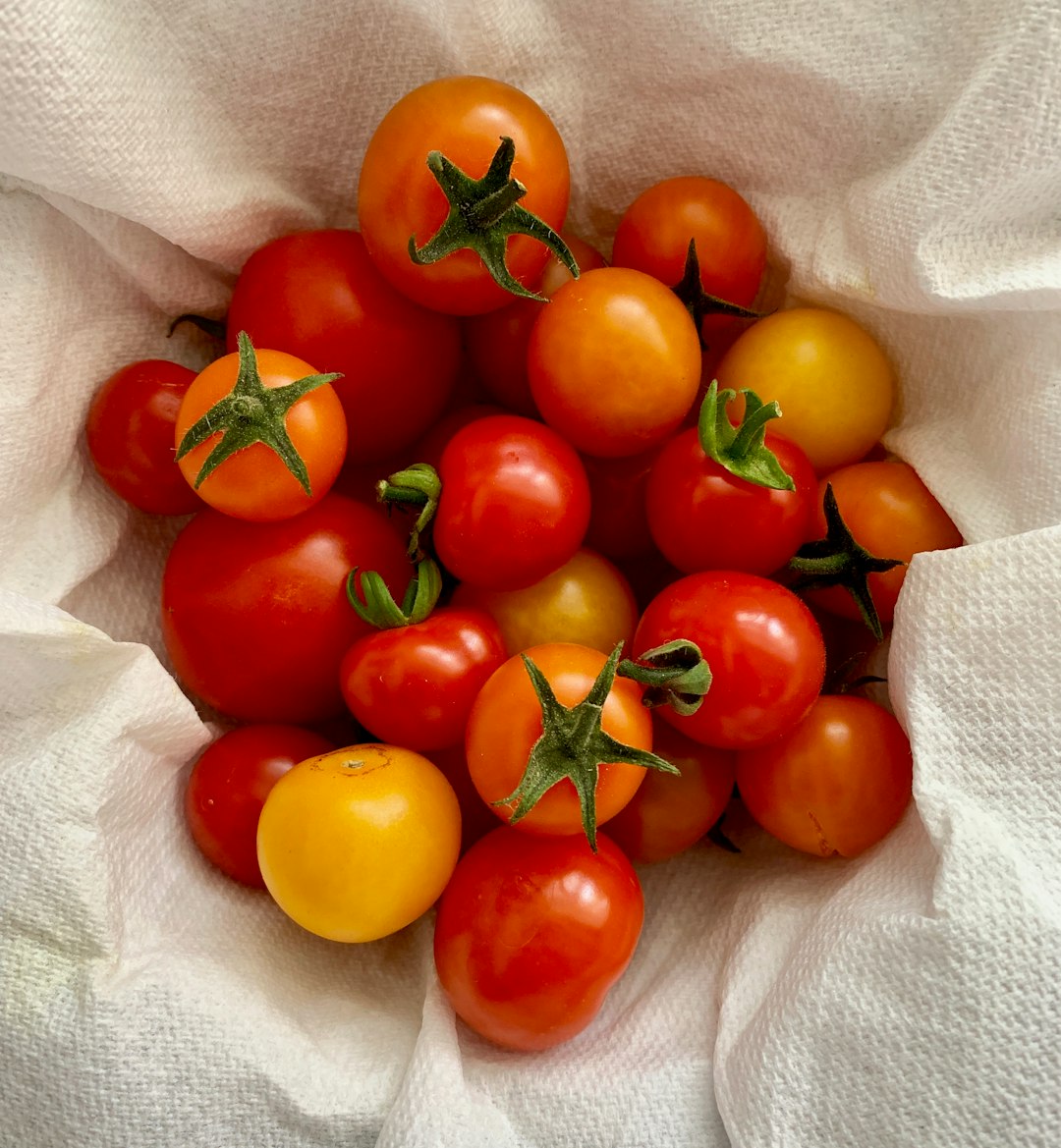
In last week’s Friday Kibbitz chat thread, readers shared their thoughts, ideas, and tips about what they like to make when it is too darn hot to cook. (My personal favorite is this Peach and Plum Kuchen Toast that takes 3 minutes, and tastes like cake for breakfast.) There were a bunch of great suggestions and, not surprisingly, gazpacho came up more than once!
As someone with a fondness for chilled soups like borscht and schav, I also love gazpacho. The traditional Spanish soup isn’t a “Jewish” recipe. But it has become a part of my family’s regular Shabbat dinner rotation, especially during the steamy summer months.
The gazpacho I grew up eating in the 1980s and 90s was on the chunky end of the spectrum - essentially cold tomato juice with chopped up cucumber and red onion swimming in it. From a flavor perspective it was tasty, but it always felt a bit like eating a bowl of pico de gallo rather than a true soup. In more recent years, I discovered the magic of creamy gazpacho, which is enriched with olive oil (and sometimes day-old bread), and blended until thick and silky.
This week, inspired by newsletter readers and my interview with Leetal Arazi from NY Shuk (see below), I amped up my usual gazpacho recipe with a bit of sumac, the brick red spice beloved across Middle Eastern cuisine. There’s sumac in the soup itself, lending an extra hint of tart, lemony flavor. And I topped each bowl with crunchy pita croutons sprinkled with more sumac. For a deep dive on sumac, check out my friend Rachel Phipps’ newsletter, ingredient. And see my interview with Leetal below for a discount code to purchase NY Shuk’s incredible ground sumac!
This gazpacho recipe takes about 15 minutes to put together, plus a couple of hours of hands-off chilling time, and could not be simpler. Many gazpacho recipes ask you to blanch and peel the tomatoes, which is tedious and involves heating up a large pot of water. (In this heat? No thank you!) But in this case, a high-powered blender does the majority of the chopping for you, and a quick pass through a mesh sieve results in an effortlessly creamy consistency.
Drizzle the punchy, refreshing soup with a little more olive oil. Yoshie brought me a bottle of basil-infused olive oil from a recent trip to France, and it made a perfect garnish. But you can also use a little more of whichever oil you used to make the soup.
Yum yum, and with nary a stovetop in sight.
15 Minute Gazpacho with Crunchy Sumac Croutons
Serves 4 to 6
For the Gazpacho:
2 pounds ripe, red tomatoes (Don’t use smaller varieties like cherry or grape, since they have a high skin-to-pulp ratio), cored and roughly chopped
1/2 medium red onion, peeled and roughly chopped
1 large cucumber, peeled and roughly chopped
1 garlic clove, peeled and roughly chopped
1 teaspoon sweet paprika (or hot paprika, if you want a little kick)
1 teaspoon ground sumac
2 1/2 teaspoons red wine vinegar
2 teaspoons kosher salt, plus more as needed
1/2 teaspoon freshly ground back pepper
1/2 cup best-quality extra-virgin olive oil, plus more for drizzling
For the Croutons:
3 tablespoons extra-virgin olive oil
2 white or whole wheat pitas, ripped into bite-size pieces
Ground sumac and kosher salt, for sprinkling
Make the gazpacho: Add the tomatoes, red onion, cucumber, garlic, paprika, sumac, vinegar, salt, and black pepper to a high speed blender, and blend on medium until smooth. (If the vegetables don’t fit all at once, add them in batches.)
With the motor running on low, slowly drizzle in the olive oil. Re-cover the blender and blend on high until the soup is creamy and emulsified. Taste and add a little more salt, if desired.
Pass the soup through a sieve set over a large bowl, using a spatula to press it through. Discard any solids, then refrigerate the soup until very cold, at least 2 hours.
Shortly before serving, make the croutons: Heat the olive oil in a large frying pan set over medium heat. Line a large plate with paper towels and set aside.
Add the pita pieces and cook, stirring occasionally, until crisp and golden, 5 to 10 minutes. Sprinkle with a little sumac and kosher salt and stir for another 10 seconds, then transfer the pita pieces to the plate to cool and continue crisping up.
Divide the gazpacho into bowls (it’s rich, so a little goes a long way!). Drizzle each bowl with olive oil, and top with the croutons.
The Four Questions: with Leetal Arazi of NY Shuk
Welcome to the latest installment of The Four Questions, The Jewish Table’s semi-regular interview segment featuring Jewish food luminaries. This week I’m delighted to be joined by Leetal Arazi, the co-founder (along with her husband Ron Arazi) of the Brooklyn-based, Middle Eastern pantry staples company, NY Shuk.
I’ve only shared a handful of meals with Ron and Leetal over the past decade, but they feel like family. I first met them in 2014, while writing an article about their company. I thought it was so cool how these two Israel-to-Brooklyn transplants were finding ways to share their families’ favorite foods (Leetal’s family is Turkish and Eastern European, Ron’s is Moroccan and Lebanese) and stories with an American audience.
Within minutes of entering their apartment, not long after Ron handed me a cup of tea made from fresh sage and rosemary leaves, I realized that I had met two kindred spirits.
Over the years, I have marveled as NY Shuk has grown, turning out one delicious product after another. Their harissa is next-level delicious. Their preserved lemon paste is literally sunshine in a jar. Their matbucha (a Moroccan tomato condiment) magically transforms everything it touches. Their line of Middle Eastern spices and spice blends are all first rate. It is fair to say that I rarely go a week without using one, if not more, of their products.
In this interview, Leetal talked about the challenges and rewards of starting a food business, the importance of preserving cultural heritage through food, and how she and Ron are raising their kids to love Jewish food in America. She also generously shared a discount code for NY Shuk’s products. Enter the code LKFRIENDS15% at checkout for 15 precent off any order from their website.
How would you describe your relationship to Jewish food, and how has it evolved?
As with many things in life, the perspective of time and place completely shifted my relationship with Jewish food.
Growing up in Israel and immersed in Jewish food on a daily basis, it was something that I didn't think much about. When Ron and I moved to the States, all of a sudden Jewish food felt very different - mostly Eastern European (bagels, lox, pastrami). It became our mission to share more about Jewish food as we know it, the Moroccan couscous, the Turkish bourekas, the Iraqi kubbe, the Lebanese za’atar flatbread, and things like that.
Our hope is to be able to bottle, share, educate and further explore the many unique family recipes that surround us, and make sure we preserve them for future generations.

What has surprised you most over the years of running NY Shuk?
Without a doubt, it’s the sheer determination that is required to keep the lights on! And the fight against all odds to make things work, no matter what is thrown at us every single day.
When you begin the journey of starting a business, you think, “Once I get ‘here,’ it will be easier.” And then ‘here’ arrives, the stakes get higher and higher, and the responsibilities become bigger. While it’s a very exhausting cycle, our mission is not just what we do for a living, it is embedded in who we are, how we see the world and in our family life.
Why did you recently decide to add matbucha (a Moroccan tomato condiment) to your repertoire of products, and what are your favorite things to make with it?
As we work to build the Middle Eastern pantry of our dreams, matbucha was bound to enter sooner rather than later. Matbucha is one of our favorite dishes. We make it at home often, and it is the foundational flavor of many other dishes we make. It is important for us to be true to how and what we actually use in our day-to-day lives.
Educating consumers to the wonders of matbucha is no easy feat, especially as there no other products like it on the market, and people are very unfamiliar with it. But we believe the flavors of this condiment are worth celebrating, and part of our mission is to share the beautiful culinary heritage we grew up in as a way to preserve it for the future. So while not an easy task, it's a task we full-heartedly believe in.
My favorite way to use matbucha is as a condiment. No matter what we eating, one dollop of matbucha on the plate automatically upgrades the dish with a burst of flavor. It literally turns the dullest meal into a flavor party!
As parents of two young kids, what Jewish food values do you try to pass along?
Ron and I were able to take for granted that we grew up surrounded by Jewish food. But we understand that we need to be more active if we want Jewish food to be a part of our kids’ lives here in America - whether that means culinary customs for Jewish holidays, Shabbat cooking, or the comfort of Jewish foods on the daily.
We try to involve our daughter Lily (4.5 years old) in the kitchen as much as possible, both in the work we do for NY Shuk, and just in our daily activities, so that one day she will have the knowledge and tools to find her path within the world of Jewish food.
Bonus: Take a (Lemonade) Stand
This past weekend, my family held a Take a (Lemonade) Stand outside of our apartment. It was a hot day that required some cold, homemade lemonade. And with every cup sold, we raised funds for two great organizations: March for Our Lives and the Abortion Access Fund.
Because here’s the thing: I want to raise kids who are pro life. And by pro life I mean:
Pro trusting women/people/families to make their own critical healthcare decisions
Pro affordable health care
Pro safe and equitable prenatal care
Pro paid family & medical leave
Pro universal childcare
Pro education funding
Pro common sense gun laws that keep kids safe from harm
The anti abortion movement may have coopted the term. But these values of compassion and equity are what being “pro life” is really about.
I wish we could send a glass of lemonade to all of you, but that would be a messy endeavor! If you feel inspired to participate virtually in our lemonade stand, please consider donating to either/both of these organizations. Thank you!
Subscribe to The Jewish Table
recipes + stories from the world of jewish food, by leah koenig




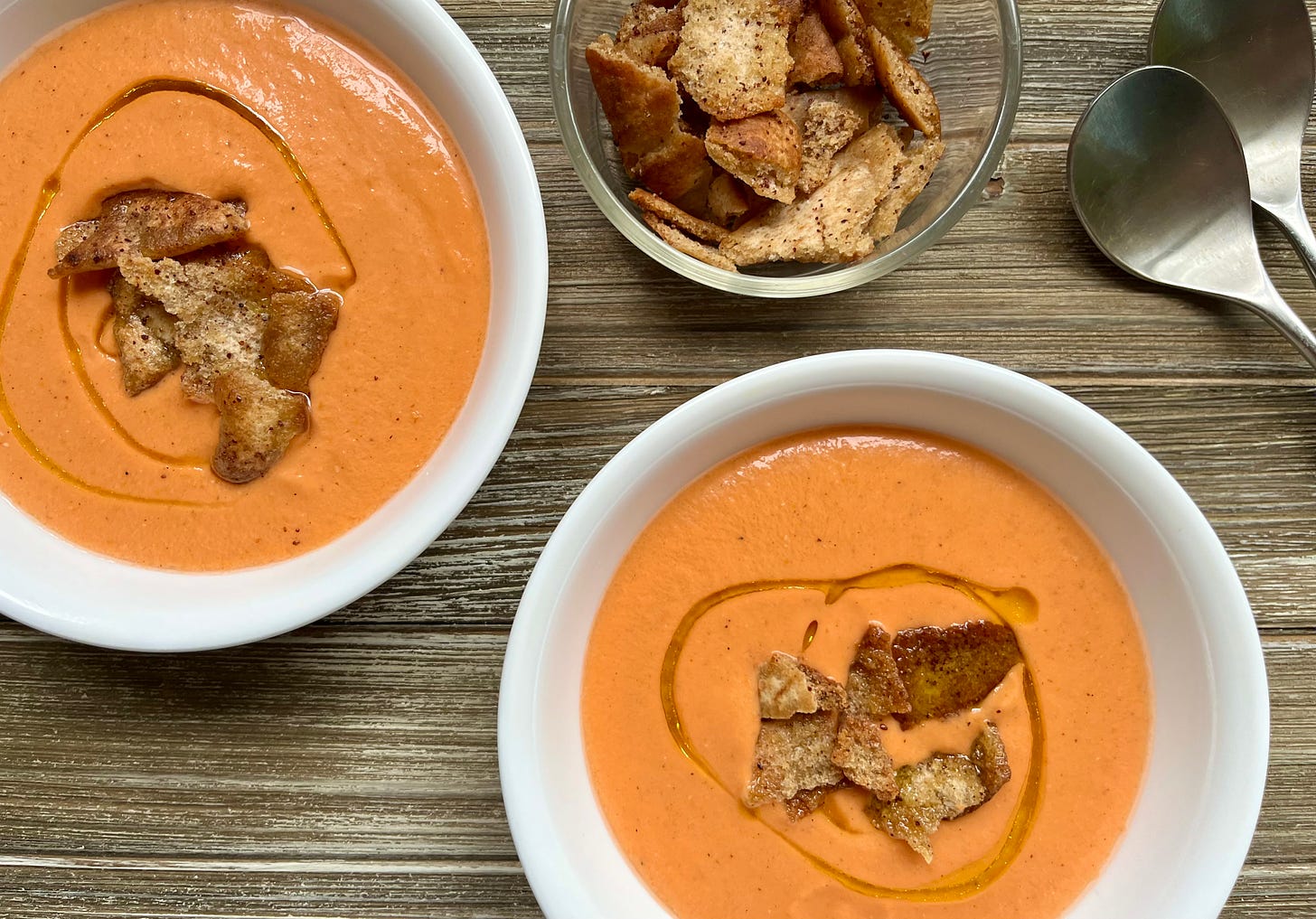

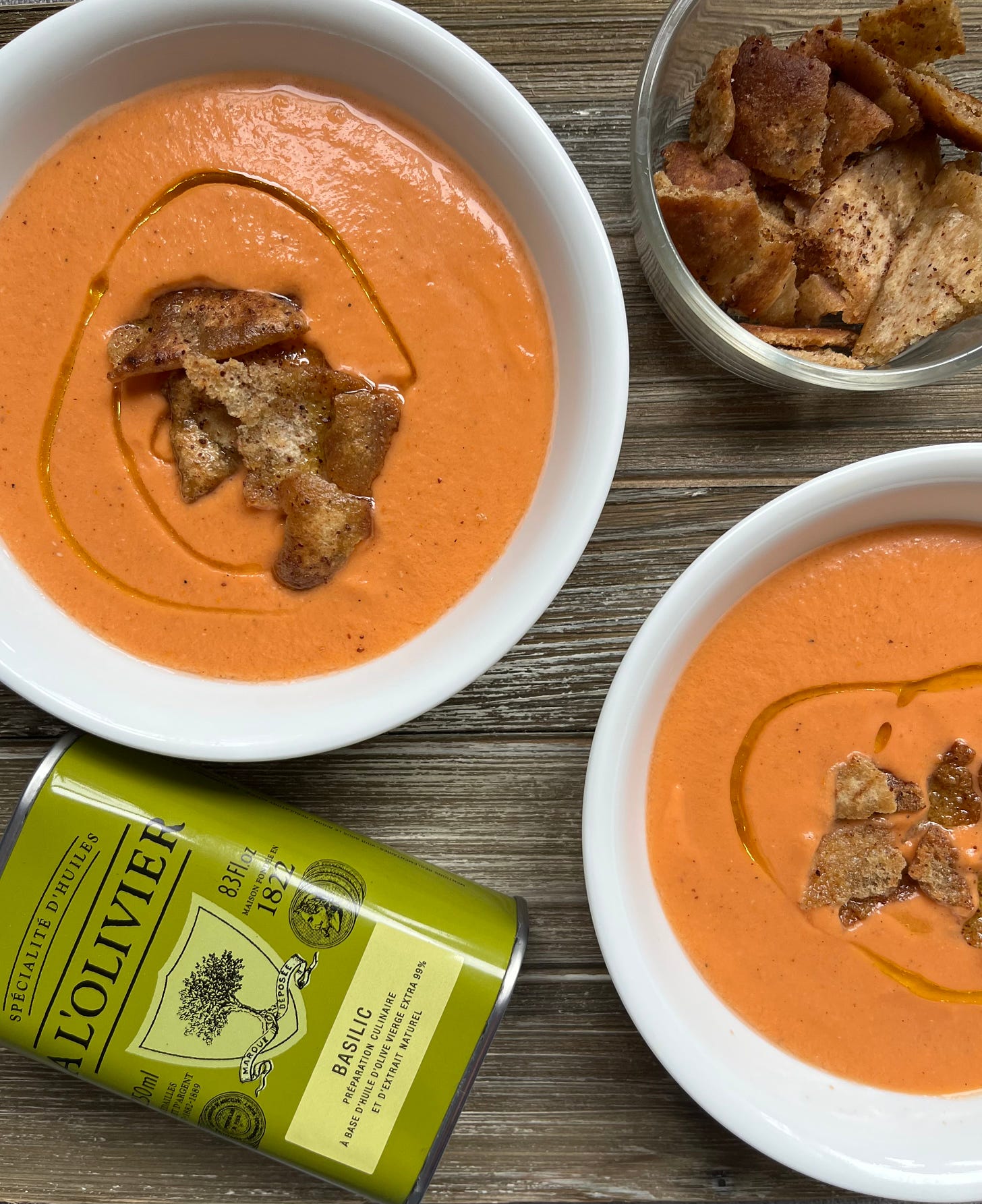

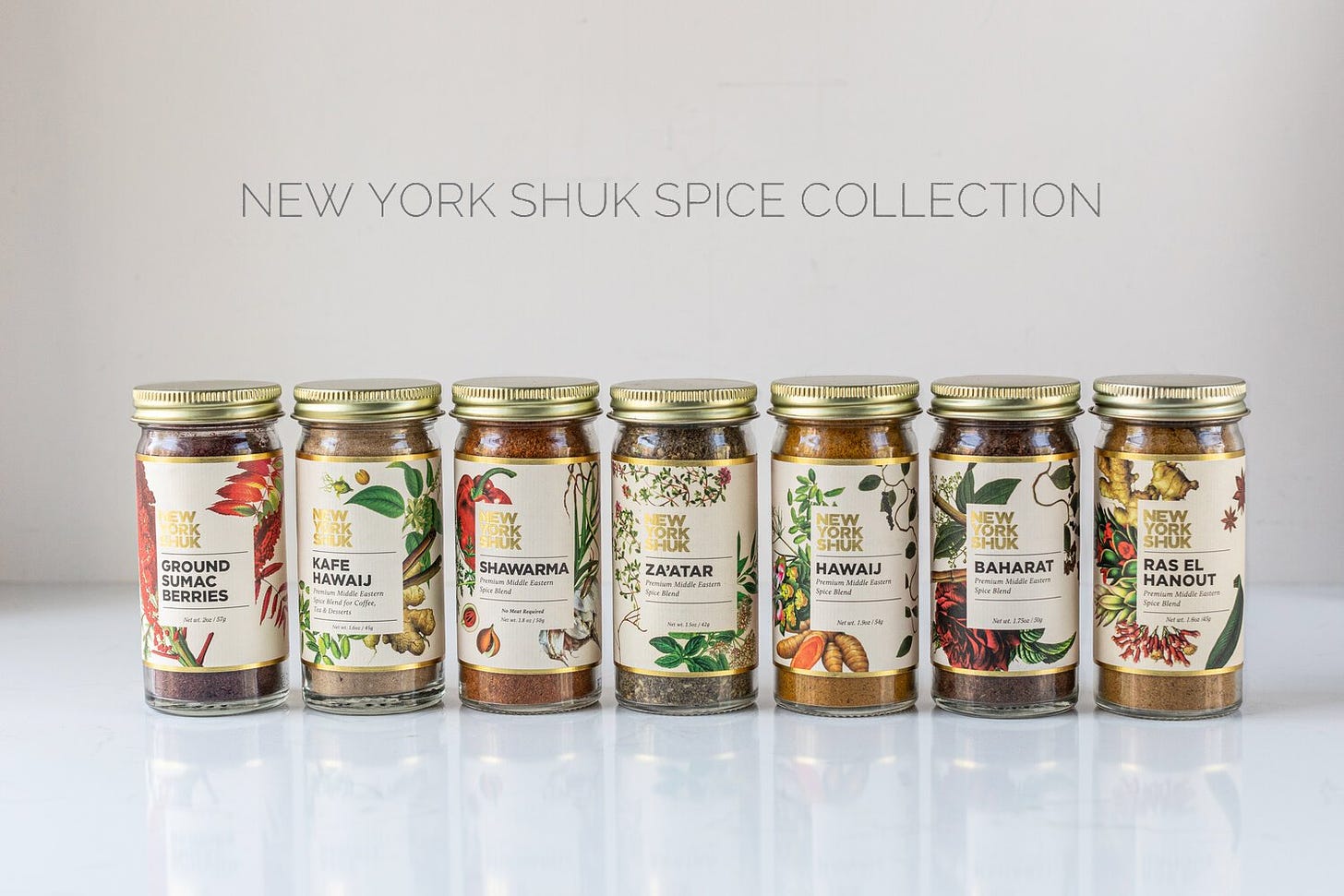
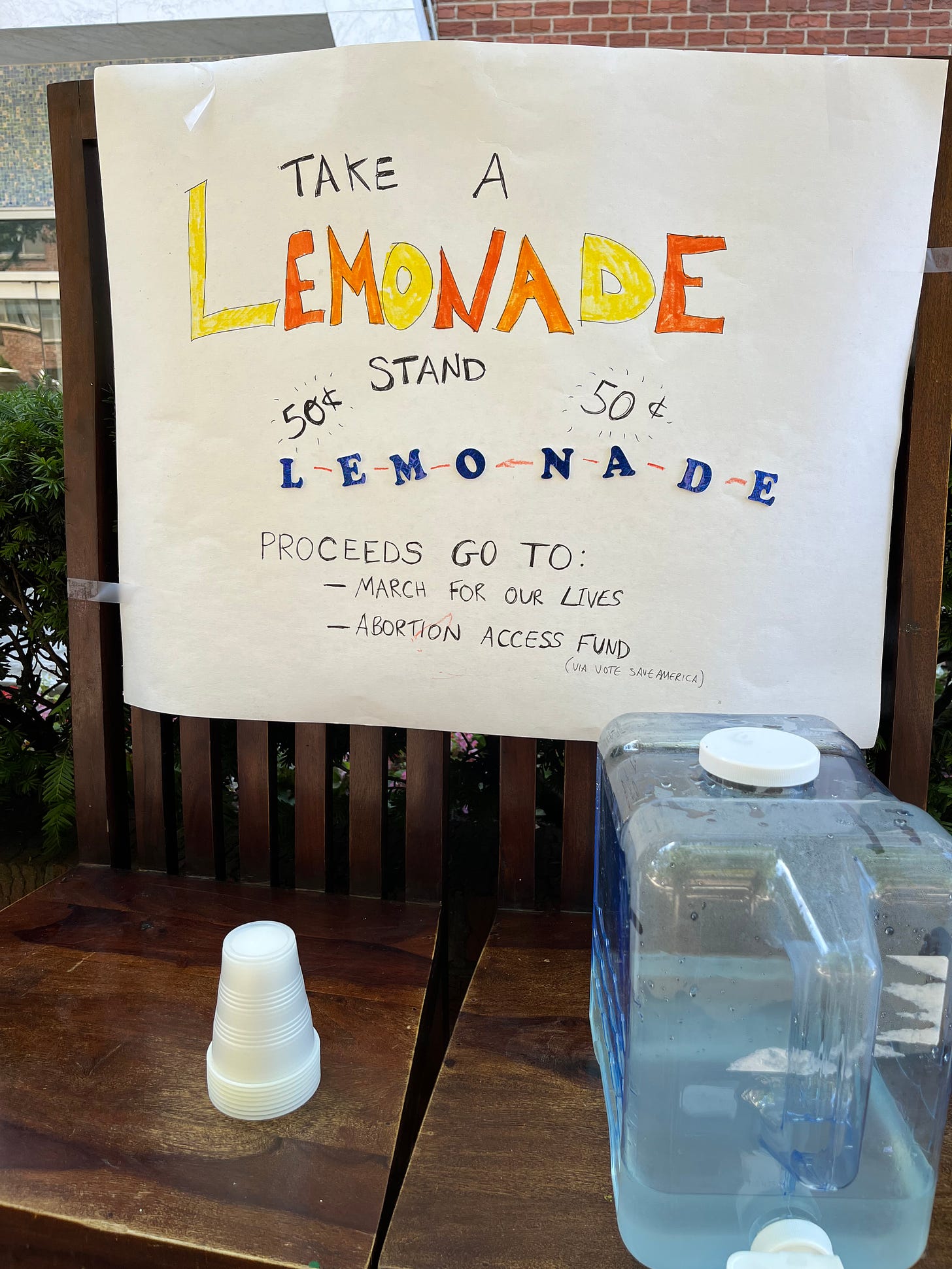








This recipe looks delicious Leah, I can't wait to try it! Also thanks so much for linking to my sumac piece xx
I’m so excited to try your gazpacho recipe! Most gazpacho recipes that I’ve seen include lots of bell peppers, which I’m allergic to (just the fruit, not paprika). Your recipe sounds delicious!